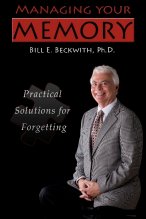Do Multiple Intelligences Help Us Know How To Engage Someone With Dementia?
Howard Gardner proposed the theory of multiple intelligences in 1983 (howardgardner.com) to more broadly interpret intelligence than can be done by standard IQ tests, which often best measure the likelihood of doing well in school. But as we all know, intelligence is far more than doing well in school. The idea, as I understand it, is that the brain has multiple skills, ways of understanding and knowing the world. At the beginning of life, these skills allow us to develop and learn to competently master tasks and information.
According to Gardner, there are eight “intelligences.” These are:
1) Verbal-linguistic intelligence: ability to analyze written and verbal information.
2) Logical-mathematical intelligence: ability to use and understand calculations, symbolism, and mathematics.
3) Visual-spatial intelligence: ability to use and understand maps, design, visual arts, and architecture.
4) Musical intelligence: ability to produce and compose different patterns of sound.
5) Naturalistic intelligence: ability to use and understand botanical, zoological, meteorological, geological features of the world.
6) Bodily-kinesthetic intelligence: ability to develop complex athletic skills such as dance.
7) Interpersonal intelligence: ability to understand others’ desires, motives, and intentions.
8) Intrapersonal intelligence: ability to recognize and understand ones own desires, motives, and intentions.
These different intelligences may be operationalized as talents that we all have in varying degrees. They represent areas where our brain may more easily acquire skills or information. For example, poets need to be strong in verbal-linguistic intelligence whereas artists need strengths in visual-spatial intelligence and ballerinas need to be strong in bodily-kinesthetic intelligence. We may be “bright” in one skill set more so than another. However, probably the most effective learning and the most accomplished among us engage multiple intelligences. These are not simply learning styles, as is often mistakenly thought, but rather varying ways to engage with the world.
Engagement is the key to enhancing quality of life as one ages – especially if one is unlucky enough to be afflicted with a dementing condition. All too often we try to engage those with diminishing cognitive skills by relying mostly on verbal-linguistic intelligence. But I know more than I can say. Even in decline there are islands of retained competences but they may not always be activated by verbal instruction. People seem so surprised when someone who is demented still plays the piano or generates complex drawings. But these retained talents make sense from the perspective of multiple intelligences.
We need to broaden the idea of brain stimulation and engagement beyond that of computer games – no offense to Lumosity, Bingo, and games of trivia. We need to creatively take advantage of what the brain can still do. We need to form group activities around skill sets rather than tasks. This involves engaging in art, music, walking in the woods, playing physical games/sports within the limits of retained competence. This involves more effort and creativity from caregivers and facilities.




